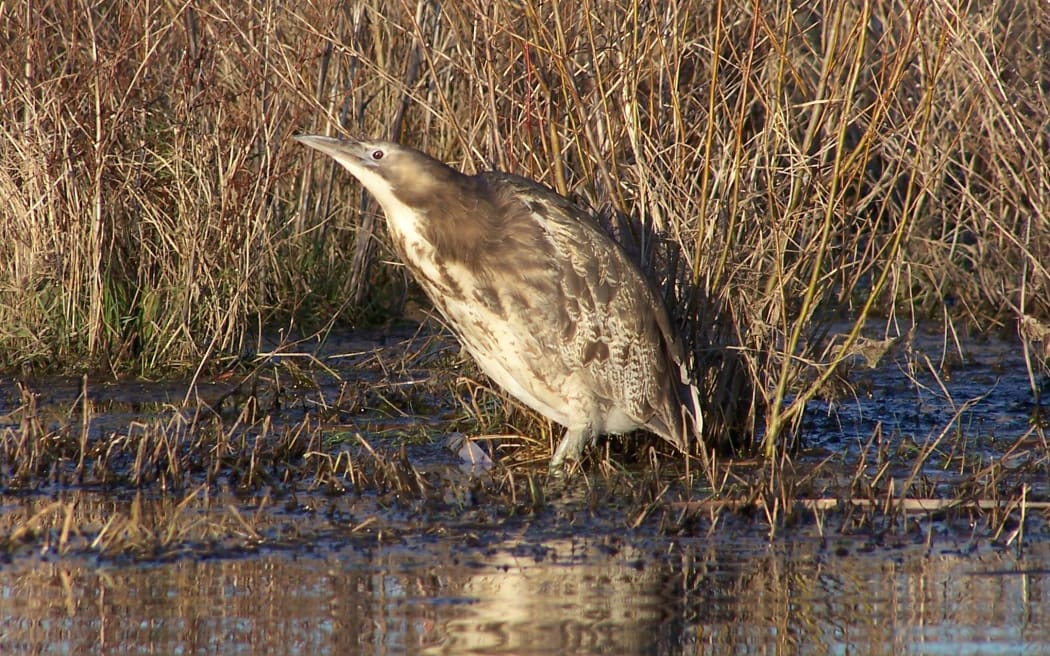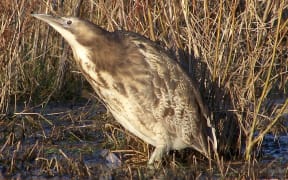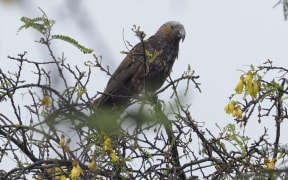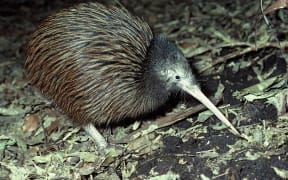
Despite their size, Australasian bitterns are a very shy bird so many motorists are unaware to be mindful of them when driving near wetland areas. Photo: John Cheyne
Efforts to save the Australasian bittern or Matuku-hūrepo have been dealt a blow with the second bird inside six months being killed on Taranaki roads.
The large stocky herons - one of the rarest wetland birds in the world - are notoriously secretive and deemed nationally critical in New Zealand.
Taranaki Regional Council (TRC) senior ecologist Halema Jamieson said the most recent death was discovered during a survey of bittern on the Mōhakatino River south of Mokau.
"It's the second one that I know of that's been hit at that spot in the last six months.
"And given that there's probably only somewhere between 500 and 700 of these birds left in New Zealand and less than 2000 left in the world that's pretty sad really.
"And that site Mōhakatino is probably one of only a handful of sites that we know they breed at in Taranaki."
Jamieson said motorists needed to take care when driving near wetlands because the well-camouflaged bittern frequented roadsides and adopted a 'freeze' stance - with their bill pointing skywards - when caught out in the open and were therefore very vulnerable.
She has asked Waka Kotahi if signs alerting motorists to the presence of bittern could be erected on the highway near Mōhakatino.
TRC staff had been surveying the birds - which are about the size of a pheasant - by recording the distinctive calls of the males when the dead bird was found.
"The males make this really beautiful booming noise in spring to attract females. It's sort of like when people blow in a bottle, a sort of 'vroom, vroom' sound."
The birds were very secretive, so most people did not even know they were there even though they were really big, Jamieson said.
"So we put out all these recorders around the place to see if we could find them and we've found them at a few locations.
"We are still analysing these sound recordings, but we've turned up a few breeding pairs in places where we didn't know they were there before."
Jamieson said they concentrated their survey around the big dune lakes in South Taranaki and had picked up breeding birds there that they hadn't recorded before, which was encouraging.
"We have records of bittern from 35 sites around Taranaki but there may be less than 15-25 birds in our region now. We only know of five sites where breeding birds have been observed in the last few years.
"We have historic records from wetlands in New Plymouth such as Rotokare at Barrett's Domain and at the old settling ponds in Bell Block, but more recently one was seen at a few sites around Waitara last year causing a bit of excitement."
Australasian bittern / matuku-hūrepo facts
- Listed as nationally critical (same as kākāpō), the last step before becoming extinct
- Also found in New Caledonia and Australia
- Global population thought to be less than 2000
- NZ population estimated between 250-1000 mating individuals, with a predicted and ongoing 50-70 percent decline
- Ninety percent of their original wetland habitat has been lost through drainage and land development
- Vulnerable to introduced predators (cats, stoats, rats) which eat their eggs and young
- Some are also killed on our roads
- Starvation is a problem for some birds, indicating poor freshwater ecosystem health
- Matuku are important to Māori and appear in legends, stories, early pictures and metaphor. There are numerous place names which refer to them. They were also an important food source and their feathers were used for ceremonial decoration.




